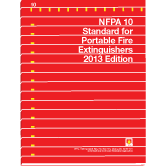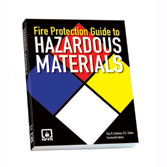Class D Fire Extinguishers
Fire Extinguishers Torrance, California
![Class D Fire Extinguishers for Metal Fires in Torrance, California]()
Class D fire extinguishers are designed to aid in suppressing, containing or extinguishing fires that involve metals such as magnesium, titanium, zirconium, sodium, potassium, lithium and zinc in Torrance, California.
Class D hazards are very dangerous. They burn hot (2500° F for magnesium, even higher for other metals). Most react violently with water, Halons, Halon substitutes and CO2. They emit toxic vapors (lithium fires produce huge amounts of dense smoke; the best extinguisher to use on lithium fires is the Model 571 with copper agent). Proper extinguishing technique may require 8-15 lbs. or more of extinguishing agent per pound of burning material (for more information, look at the label on the back of our Model 570 and Model 571 regarding “extinguishing capacity”). If proper extinguishing technique is not used the burning material may spread throughout the area (castings, shavings, turning, powder, chips, shot and flakes). Fighting these fires requires an integrated approach including fire extinguishers, safety equipment, bulk agent, and thorough training.
![Wheeled Unit Fire Extinguisher Class D in Torrance, California]() Class D hazards are completely different than any other Class of Fire. Agents that work on Class A, B, C and even K have no effect on Class D fires and may actually have an adverse effect. Conversely, agents that are effective on Class D fires have no effect on any other class of fire. Caution should be taken when fighting fires involving high temperature metals & toxic fumes, proper training should be conducted for qualified employees & personnel intended to operate any Class of fire extinguisher including Class D fire extinguishers. Class D hazards are completely different than any other Class of Fire. Agents that work on Class A, B, C and even K have no effect on Class D fires and may actually have an adverse effect. Conversely, agents that are effective on Class D fires have no effect on any other class of fire. Caution should be taken when fighting fires involving high temperature metals & toxic fumes, proper training should be conducted for qualified employees & personnel intended to operate any Class of fire extinguisher including Class D fire extinguishers.
Class D Fire Extinguisher Service
Fire Extinguishers Torrance, California
![Class D Fire Extinguisher Service in Torrance, California Class D Fire Extinguisher Service in Torrance, California]() Class D fire extinguishers should be serviced according to manufacturer specifications, Federal, OSHA, State, NFPA 10 Standard for Portable Fire Extinguishers or municipal fire code in Torrance, California. Class D fire extinguishers should be serviced according to manufacturer specifications, Federal, OSHA, State, NFPA 10 Standard for Portable Fire Extinguishers or municipal fire code in Torrance, California.
By shopping licensed, authorized, qualified and factory trained fire extinguisher companies in Torrance, California you may obtain estimates that will detail the costs to install, service, repair, test, inspect, maintain, annual tags & certifications, (6) six year inspections, refill, recharge or replacement of Class D portable, wheeled or fixed unit fire extinguishers.
Class D Fire Extinguishers | How They Work
Fire Extinguishers Torrance, California
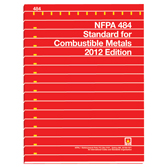 Class D fires involve combustible metals or metallic alloy elements with combustible metal components. Some of the better known combustible metals with a record of fire involvement include magnesium, titanium, zirconium, sodium, potassium, lithium and zinc. To be effective on any type of Class D fire, the extinguishing agent must suppress the fire without reacting physically or chemically with the combustible materials. [NFPA 484 Standard for Combustible Metals (above right)] Class D fires involve combustible metals or metallic alloy elements with combustible metal components. Some of the better known combustible metals with a record of fire involvement include magnesium, titanium, zirconium, sodium, potassium, lithium and zinc. To be effective on any type of Class D fire, the extinguishing agent must suppress the fire without reacting physically or chemically with the combustible materials. [NFPA 484 Standard for Combustible Metals (above right)]
The two more familiar dry powder extinguishing agents for controlling combustible metal fires are graphite and sodium chloride (salt). More recently the U.S. Navy has developed a new agent specifically for lithium fires. It should be noted that the term “Dry Powder” should not be confused with “Dry Chemical” which is normally associated with extinguishing agents suitable for use on flammable liquid fires. In fact, some “Dry Chemicals” may create an explosive reaction when applied to combustible metal fires.
|
Class D fire extinguishers are generally installed in areas where combustible metal powders, flakes, shavings, chips are generated. Such as welding shops, garages, die cast plants, industrial plants, mines, flour mills, grain mills, feed mills, cereal plants, chemical plants, steel plants, machine shops, metal fabricating shops, naval ships, marine vessels, military or occupancies that include areas used for welding or metal work. |
Class D extinguishers are used on fires involving metals such as magnesium, titanium, zirconium, sodium, and potassium.
Below is a resource for NFPA 400: Hazardous Materials Code, 2013 Edition
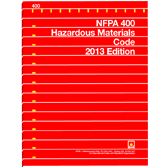 |
Due to the extreme heat and toxic vapors that may be generated by a Class D fire included are resources for NFPA 400, NFPA 49 & Fire Protection Guide to Hazardous Materials, 2010 Edition.
Employees & Personnel operating any portable, wheeled or fixed unit fire extinguisher should complete a Qualified Fire Extinguisher Training Class. |
|

Fire extinguishers will generally have a pressure gauge to notify you when it requires a refill and recharge of the extinguishers contents so that it may be ready and operational for use to extinguish fires in Torrance, California. |
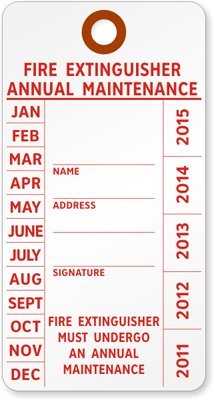
Annual inspections and certification tags should be completed by factory authorized, manufacturer certified fire extinguisher companies actively licensed in Torrance, California. |
Fire Extinguishers will require service, maintenance and repair to remain fully operational at all times.
- Recharging
- Hydrostatic Tests
- Refilling
- Annual Inspections
The services performed on installed fire extinguishers in Torrance, California should be performed by actively licensed, manufacturer certified and/or NAFED certified fire extinguisher companies in Torrance, California.
The additional certifications aid in determining levels of knowledge, experience and professional courtesy when deciding which fire extinguisher company you'll choose to work with. |
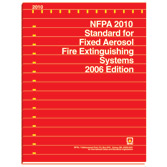
Standard for Portable Fire Extinguishers
NFPA 10
1.1* Scope. The provisions of this standard apply to the selection, installation, inspection, maintenance, and testing of portable extinguishing equipment. A.1.1 Many fires are small at origin and can be extinguished by the use of portable fire extinguishers. Notification of the fire department as soon as a fire is discovered is strongly recommended. This alarm should not be delayed by awaiting results of the application of portable fire extinguishers. Fire extinguishers can represent an important segment of any overall fire protection program. However, their successful functioning depends upon the following conditions having been met: (1) The fire extinguisher is located in accordance with the requirements of Chapter 6 and is in working order. (2) The fire extinguisher is of the correct type for a fire that can occur. (3) The fire is discovered while still small enough for the fire extinguisher to be effective. (4) The fire is discovered by a person ready, willing, and able to use the fire extinguisher. Fixed systems are covered by the following NFPA standards: (1) NFPA 11, Standard for Low-, Medium-, and High-Expansion Foam (2) NFPA 12, Standard on Carbon Dioxide Extinguishing Systems (3) NFPA 12A, Standard on Halon 1301 Fire Extinguishing Systems (4) NFPA 13, Standard for the Installation of Sprinkler Systems (5) NFPA 14, Standard for the Installation of Standpipe and Hose Systems (6) NFPA 15, Standard for Water Spray Fixed Systems for Fire Protection (7) NFPA 16, Standard for the Installation of Foam-Water Sprinkler and Foam-Water Spray Systems (8) NFPA 17, Standard for Dry Chemical Extinguishing Systems (9) NFPA 17A, Standard for Wet Chemical Extinguishing Systems (10) NFPA 96, Standard for Ventilation Control and Fire Protection of Commercial Cooking Operations (11) NFPA 750, Standard on Water Mist Fire Protection Systems (12) NFPA 2001, Standard on Clean Agent Fire Extinguishing Systems 1.1.1 Portable fire extinguishers are intended as a first line of defense to cope with fires of limited size. 1.1.2 The selection and installation of extinguishers is independent of whether the building is equipped with automatic sprinklers, standpipe and hose, or other fixed protection equipment. (See 5.5.5, 6.1.1.1, 6.2.1.1, and 6.2.1.5.) 1.1.3 The requirements given herein are minimum. 1.1.4 The requirements do not apply to permanently installed systems for fire extinguishment, even where portions of such systems are portable (such as hose and nozzles attached to a fixed supply of extinguishing agent). |
Portable, wheeled or fixed unit fire extinguishers are an invaluable tool that every occupied building should install and properly service aiding in the containment, suppression or extinguishing of small fires in Torrance, California.



